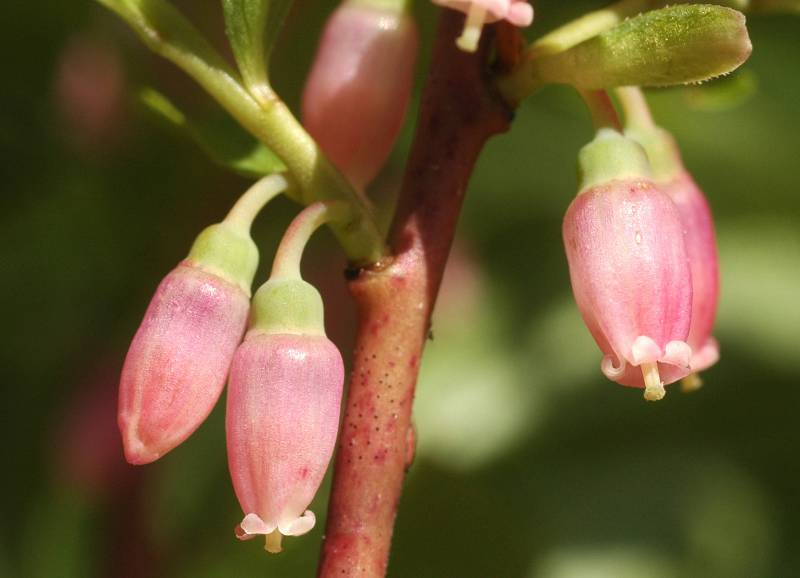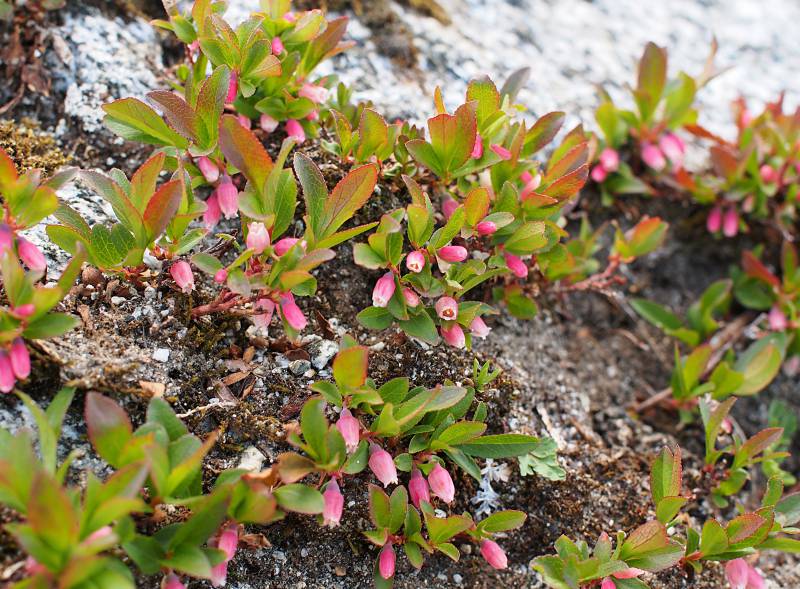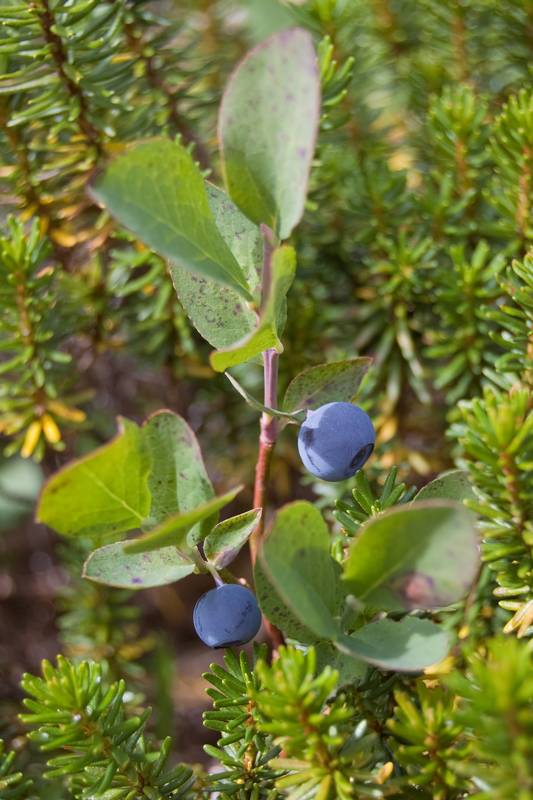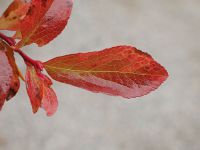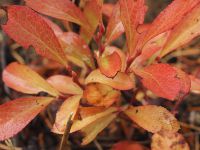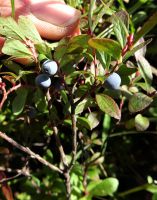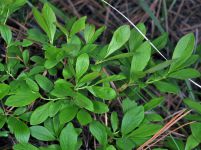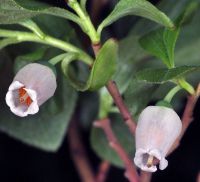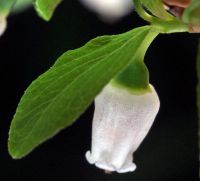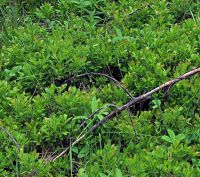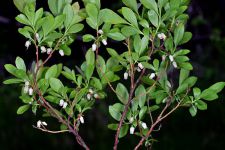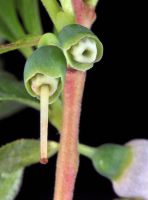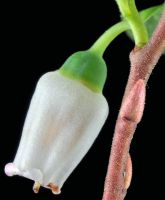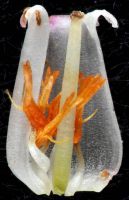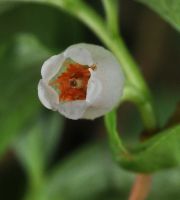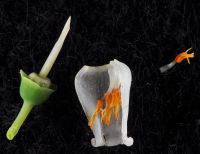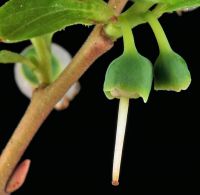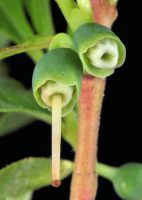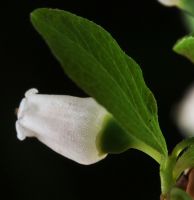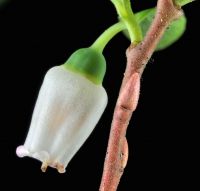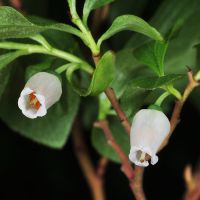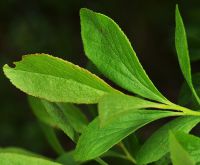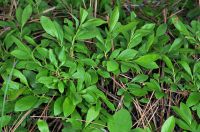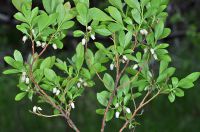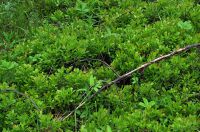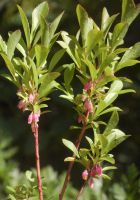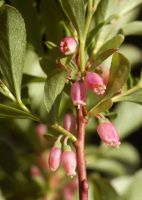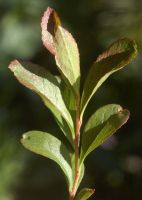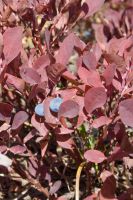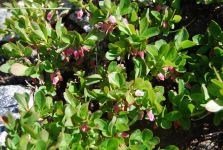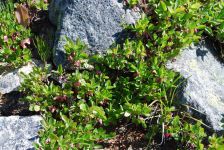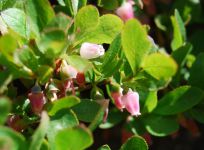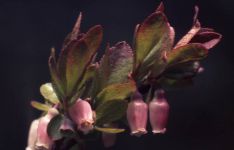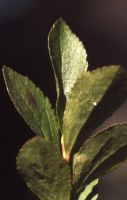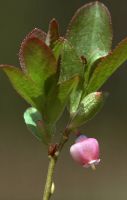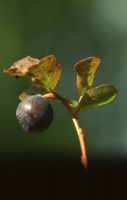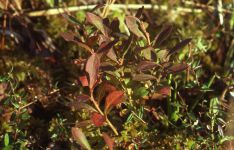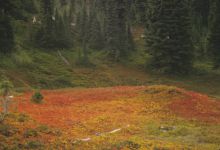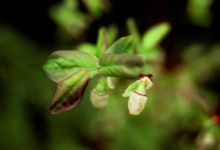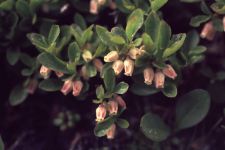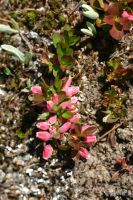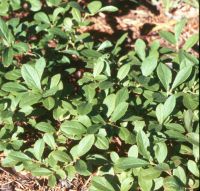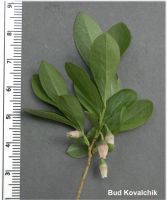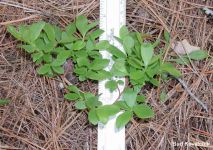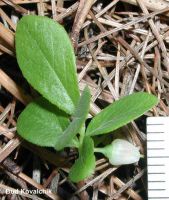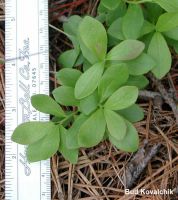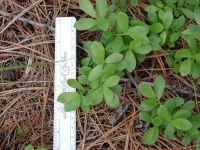Distribution: Widely distributed in the mountainous areas of Washington; Alaska to California, east to the Rocky Mountains, northern Great Plains, Great Lakes region, and northeastern North America.
Habitat: Moist rocky ridges and meadows, mid- to high elevations in the mountains.
Flowers: May-July
Origin: Native
Growth Duration: Perennial
Conservation Status: Not of concern
Pollination: Bumblebees, bees
Deciduous shrubs spreading widely by rhizomes and forming mats 1.5-3 dm. tall, the twigs somewhat angled, with yellowish-green to reddish bark, usually finely puberulent.
Leaves alternate, oblanceolate, 1-3 cm. long and + to as broad, with a wedge-shaped base, light green and glabrous above, paler and glandular below, serrulate from mid-length to the tips.
Flowers single in the axils, whitish to pink, 6-7 mm. long; calyx obscurely 5-lobed; corolla united, narrowly urn-shaped, twice as long as wide, the 5 lobes very short; anthers with dorsal awns and apical, pore-bearing tubes; ovary inferior.
Fruit a berry, glaucous-blue, globose, 5-8 mm. broad.
Publication: Fl. Bor.-Amer. (Michaux) 1: 234. 1803.
Vaccinium caespitosum Michx., orthographic variant [FNA8, HC]
Vaccinium caespitosum Michx. var. angustifolium A. Gray
Vaccinium caespitosum Michx. var. arbusculum A. Gray
Vaccinium caespitosum Michx. var. caespitosum [KZ99]
Vaccinium caespitosum Michx. var. cuneifolium Nutt.
Vaccinium caespitosum Michx. var. paludicola (Camp) Hultén [KZ99]
Vaccinium geminiflorum Kunth
Vaccinium nivictum Camp
Vaccinium paludicola Camp
PNW Herbaria: Specimen records of Vaccinium cespitosum in the Consortium of Pacific Northwest Herbaria database
WA Flora Checklist: Vaccinium cespitosum checklist entry
OregonFlora: Vaccinium cespitosum information
E-Flora BC: Vaccinium cespitosum atlas page
CalPhotos: Vaccinium cespitosum photos

